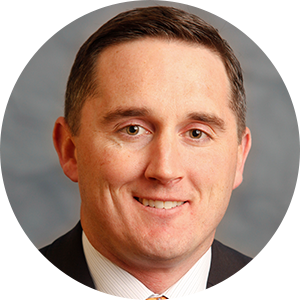The Pulse from UnitedHealthcare: East region CEO talks cost management
Greg Reidy shares how UnitedHealthcare is helping employers in the East region manage their costs.

Authored by Greg Reidy, CEO of the East region with UnitedHealthcare Employer & Individual

Health care costs continue to escalate at unsustainable rates — and employers across the East region of the U.S. are feeling it.
From Maine to Florida and Washington, D.C. to Ohio, employers are telling us that they’re finding themselves between the proverbial rock and a hard place:
- They want to strike the right balance between offering robust benefits and protecting their bottom line
- They want to attract and retain talent without breaking the bank
- They want their employees and their families to be happy, healthy and productive while reducing their costs
Our own data paints a similar story: On top of the rise in costs across the country, there is variance in states across the East. For instance, West Virginia, New York, Vermont and New Hampshire are states with particularly high health care costs.
That’s why I feel so strongly about the importance of taking a strategic approach to cost management that takes into account health plan and network designs, as well as clinical programs and strategies that all work together to help drive more informed health care decisions.
Leveraging a variety of plan and network designs
At UnitedHealthcare, we can leverage a variety of plan and network designs that aim to meet the cost needs of employers — and the markets I support have done a great job of trying out different plans and networks.
Take Surest®, a UnitedHealthcare company. We’re finding that this health plan is gaining traction in Pennsylvania, Georgia and Tennessee, and it’s no wonder: Employers that offer Surest save an average of 11% per member per month (PMPM).1 Plus, employees can search, compare and select care from anywhere, anytime, which puts them in the driver’s seat of choosing the care that fits their budgets.
Across the East region, we’re also seeing increasing adoption of our UnitedHealthcare Level Funded plans. These types of plans reduce costs for our employers in several ways, including via risk mitigation and the potential for a surplus refund.2
Many states in the East region, such as Louisiana, Florida and Maryland, are finding a foothold with various network designs that are characterized by:
- Alignment with PCPs who have demonstrated greatest impact on total cost of care and health outcomes
- Tailored networks that provide members with lower cost access to high quality providers and facilities
- Plan designs that offer the highest level of benefits for seeing providers that deliver the greatest value
Leaning into effective clinical strategies
In the East region, our employers are also finding how critical clinical strategies are to reducing employer costs.
At UnitedHealthcare, we work with Optum — our sister company — to help employees see more value from their benefits package. For instance, by using data and analytics, we can proactively identify employees at risk for certain chronic conditions, which are also some of the most costly, and help guide them to the right care, in the right place, at the right cost.
Even just encouraging the use of cost-effective sites of care — for example, urgent care settings versus emergency rooms — has the potential to lower costs for employers.
Empowering employees to make informed health decisions
Getting employees engaged in their own health is another way employers in the East region are helping manage their health care costs over the long-term. Our Advocacy programs help support employees in making more informed decisions surrounding their care, including answering questions related to benefits, claims and coverage information and assist with searches for covered providers.
Skyrocketing pharmacy costs seem to cause persistent headaches among employers and employees, but solutions like PreCheck MyScript®, which integrates coverage details into a provider’s electronic medical records (EMR), can offer information on lower-cost prescriptions in real time.
Plus, programs like UnitedHealthcare Rewards also support employees through an experience that’s designed to help inspire healthier habits.
While health care costs continue to rise across the U.S., I’m confident that these strategies can help employers in the East region and beyond meet the needs of their employees in a way that also enables more affordable care.